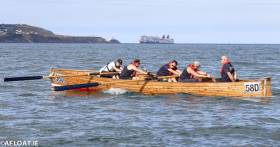Displaying items by tag: Hobblers Challenge
St. Michael’s Rowing Club hosted The Hobblers Coastal Rowing Challenge on Saturday, a 28km endurance race, which has been taking place since the 1990s on Dublin Bay.
Several courses have been used, predominantly from Dún Laoghaire Harbour to the Kish Lighthouse and back.
As Afloat previously reported, four categories competed this year: Ladies, Men, Mixed and Under 21.
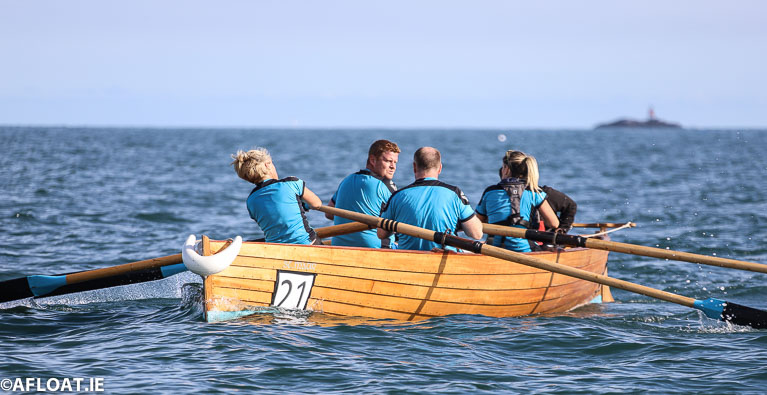
Saturday's course, first set in 2017, started at Dun Laoghaire Harbour, at the East Breakwater beneath the Hobblers Memorial, out the harbour mouth, around the landward side of a ‘gate boat’ off Merrion Strand, around Poolbeg Lighthouse, up the Liffey as far as the ESB towers, before doubling back, across the mouth of Dun Laoghaire Harbour, across Scotsman’s Bay, past Sandycove and Bullock Harbours, turning at Coliemore Harbour, before returning to Dun Laoghaire Harbour, finishing at the end of the East Breakwater.
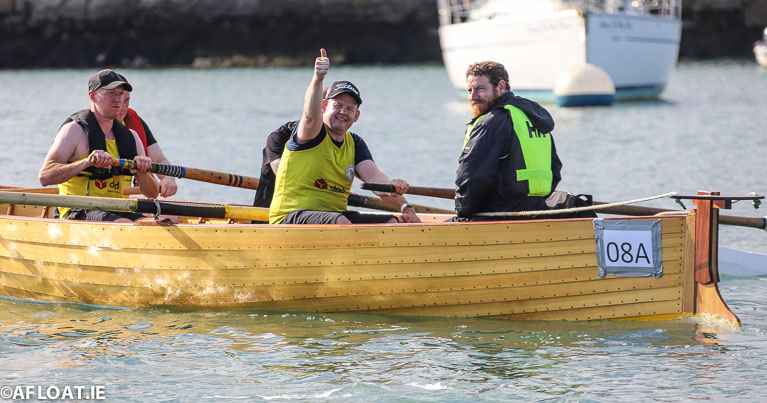

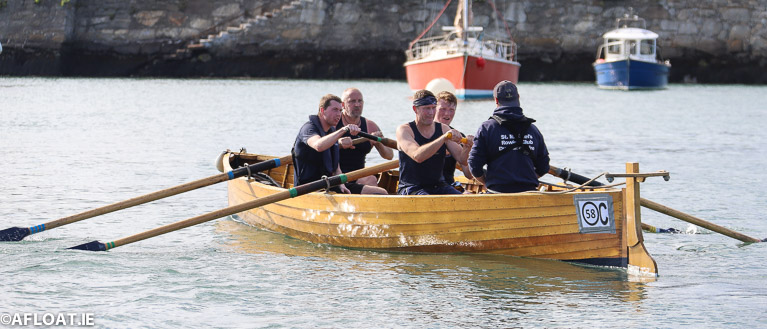
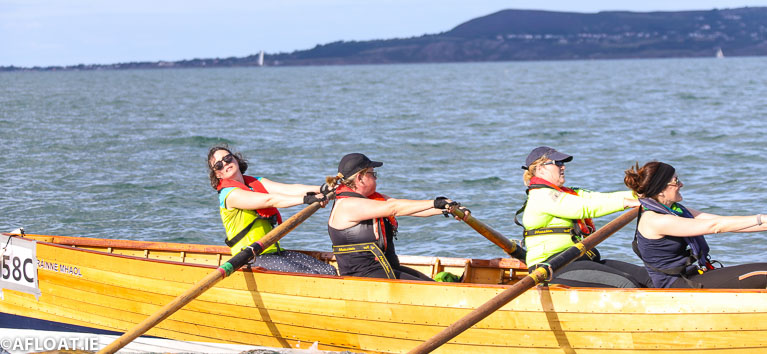
Dublin Bay Rowing Skiffs Rescued off Kish
#rnli – Howth and Dun Laoghaire RNLI rescued five rowing skiffs in Dublin Bay last weekend when wind against tide conditions off the Kish bank threatened a local coastal rowing race.
Both All-Weather Lifeboats from Howth RNLI and Dun Laoghaire RNLI were tasked by Dublin Coastguard to assist five rowing skiffs just after 5pm according to Howth lifeboat.
Nine skiffs, each with 5 people onboard, participating in a rowing race which started from Dun Laoghaire and took them around the Kish lighthouse and back to Dun Laoghaire again. Due to the variable weather conditions and with there being quite choppy sea a number of the participants got into difficulty.
Howth lifeboat arrived on scene at 1741 and became On-Scene-Commander of the search and rescue operation.
They were joined shortly after by Dun Laoghaire's all weather lifeboat, rescue 116, Dublin Ports pilot boats 1 and 2 along with a yacht and fishing vessel.
A 'box' search was carried out one mile north and south of the Kish Lighthouse and all 5 skiffs and their crews were located and brought back to Dun Laoghaire Harbour.
On arrival the casualties were met by Dun Laoghaire coastguard unit and 2 HSE ambulances to treat a number of the casualties for hypothermia and one with a head injury.
Surviving West Country Schooner Evokes Days of Irish Sea Sail Cargo Trade
Bessie Ellen is rigged with eight sails which cover 330 sq m and this would be the only source of power to transport her hold which had a cargo capacity for 150 tons. Her original owner was the North Devon home-skipper Captain John Chichester who named the ketch after two of his daughters. The crew would be limited to between four to six persons, a captain, mate, deckhands and cook.
By the Second World War most of these numerous working cargo sailing ships were being taken over by power-driven vessels. They were becoming increasingly redundant and laid-up rotting away in creeks, fortunately there was sufficient cargo for Bessie Ellen up to 1947.
She was purchased by Danish owners for where she carried a profitable trade in scrap metal, even so sail-power was not enough and she had an engine installed. Trade increased and she was too small to serve her owners Capt. Moller up to the 1970's. In 1983 there were plans to convert the vessel for charter but this fell-through.
Her current owner Nikki Alford brought the vessel in 2000 and over the next three years she was refitted to original rigging specifications and re-emerged in her new career as a sail training vessel. She runs day-long sailing cruises and longer sailing expeditions and educational programmes. Accommodation is for 20 persons in bunks and another 12 is set aside for guests.To read more about the ketch click HERE.
In recent years another West Country traditional sailing vessel the staysail-schooner Kathleen and May made an historic voyage to Dublin in 2008 with a commercial cargo of French wine. This would be the first cargo she conveyed since 1961, also the last year in which the last Arklow owned cargo-carrying schooner the De Wadden would trade, though she was fitted with an engine. The schooner is now preserved in Liverpool, click this LINK.
Katheleen and May made a second delivery to Dublin in 2009 again for Fair Wind Wine and the company (CTMV) also chartered the schooner Etoile de France in advance of St. Patrick's Day. The final CTMV wine cargoes were on board the Bessie Ellen and Notre Dame de Romengol during the last Dublin Docklands Maritime Festival held in 2010. The small French coastal cargo vessel or "gabare" built in 1945 at Camaret, near Brest is classified by the French government as an historic monument.
Also last year the oldest sailing tallship in Europe, the French barque Belem attended the inaugural Hoist the French Sail, French Week in Dublin. The 1896 built Belem was specially chartered in to celebrate the 50th anniversary of Alliance Francaise in Dublin.
Several years ago Belem called to the capital to deliver wine but this was a trade-only publicity exercise prior to the CTMV wine cargoes. Apart from wine she is also associated with Sir Arthur Ernest Guinness of the family brewing dynasty, who owned her as a private 'yacht' under the name of Fantôme II. To read more about the fascinating history of this barque click HERE.
- Dublin Bay
- Dublin Port
- Dublin Docklands Maritime Festival
- Tall Ships
- Fair Wind Wine
- Belem
- Dun Laoghaire Harbour News
- Fantome II
- East Coast skiffs
- Hobblers Challenge
- Rowing news
- St. Michaels Rowing Club
- Irish Sea schooners
- Hoist the Flag French Week Festival
- CTMV
- Bessie Ellen
- West Country ketch
- West Country gaffschooner
- Kathleen and May
- Irish Sea sailing cargo
- Sir Arthur Guinness
- Guinness yachts
- Barque Belem
- Belem Fondation
- Dublin Bay Hobblers
Courtown Harbour Rowing Club took second place in a time of 3:3:19 and third place honours went to Stella Maris Rowing Club with a time of 3:16.00. The hosts of the Hobblers Challenge, St. Michaels Rowing Club based out of the Coal Harbour, passed under the high walls of the East Pier Lighthouse and battery some two minutes later in fourth place.
The annual event (for race-route click HERE) was only re-introduced onto the race calendar last year after a break of several years. The skiffs were launched at the Coal Harbour slipway where they headed over to line-up for the starter's gun opposite the Hobbler's Memorial located on the publicly accessible Eastern Breakwater which is between the Stena Line HSS fast-ferry berth and the Dun Laoghaire Marina.
In attendance to greet the start of the race in memorial of the Dublin Bay hobblers was the RNLB Anna Livia of the local RNLI lifeboat station. The bronze memorial depicts a tower of lifejackets in commemoration of three young Dun Laoghaire hobblers who after piloting and unloading the schooner Jealous of Me in Ringsend, failed to return home.
This occupation was carried out by men also from Ringsend, Dalkey and other harbours and it was the first crew to reach a ship and throw a hook on the deck who would win the business of pilotage and unloading in Dublin Port.
Crews would think nothing of rowing out to the Kish Bank on the hope of spotting a ship. If they waited offshore and no passing trade appeared along the East Coast the craft doubled as a bed if it became too late to row home. The craft were much larger and heavier compared to the present day skiff and it is in these oarstrokes that the Hobblers Challenge follows the original race of the hobblers during the 18th and 19th centuries.
It was apt that on the same day of this year's Hobblers Challenge, the 107-year-old ketch Bessie Ellen, a former cargo-carrying vessel that represented one of the last such sail-trading ships operating in the Irish Sea, was making a passage to the east of the Kish Bank.
To read more about the un-manned Kish Lighthouse click this HERE, and for the 150 cargo tons capacity ketch built in 1904 click HERE.
- Dublin Port
- Fishing
- Dun Laoghaire Marina
- Dublin Bay News
- Irish Lights
- Dun Laoghaire Harbour
- Kish Bank
- Ferry news
- Stella Maris Rowing Club
- Kish Lighthouse
- East Coast skiffs
- Dun Laoghaire Harbour and news
- Stena Line HSS Dun Laoghaire
- Hobblers Challenge
- Dublin Bay pilots
- Rowing news
- Coal Harbour Dun Laoghaire
- St. Michaels Rowing Club
- Courtown Rowing Club
- St.Patricks Rowing Club
- Ringsend skiff clubs


























